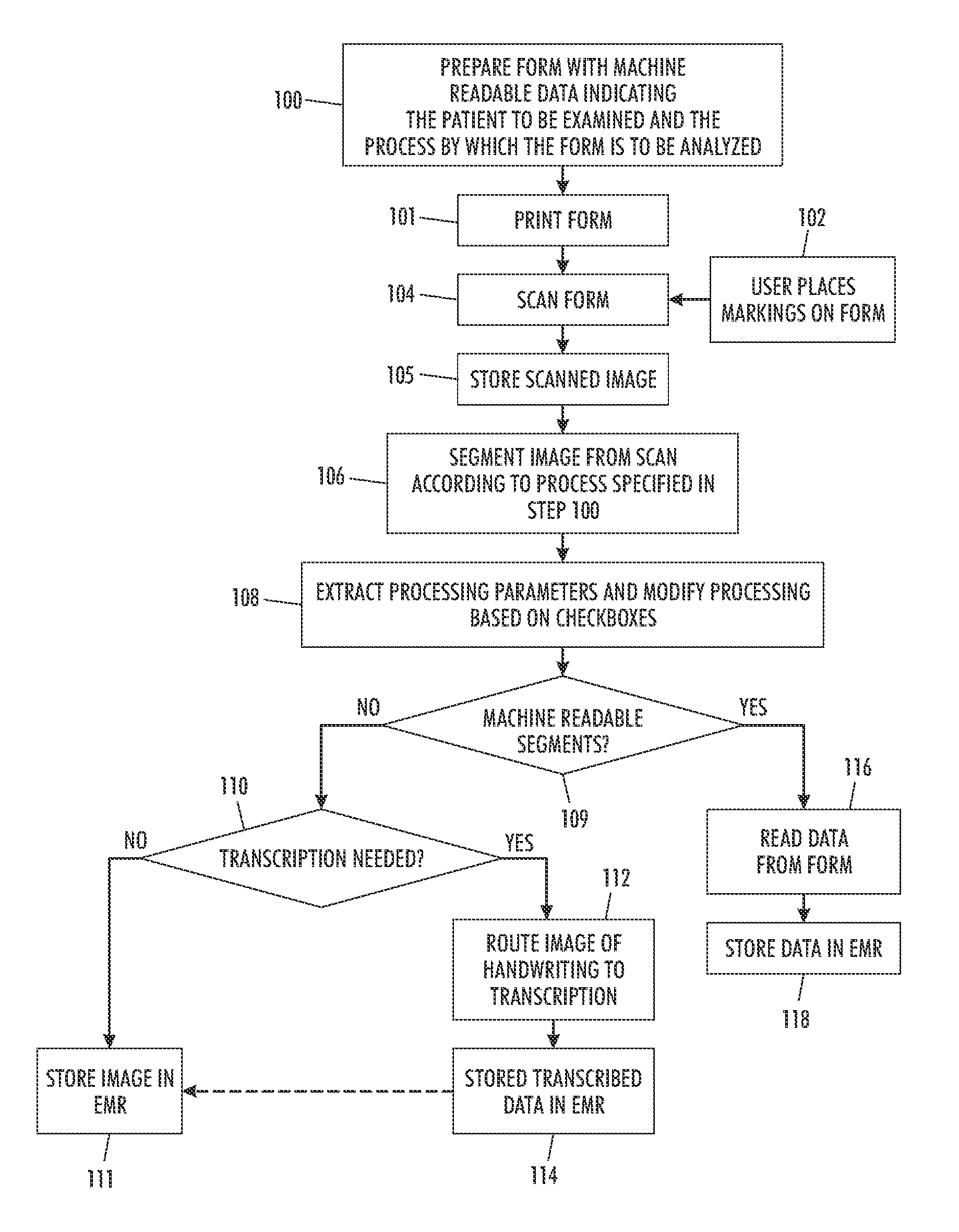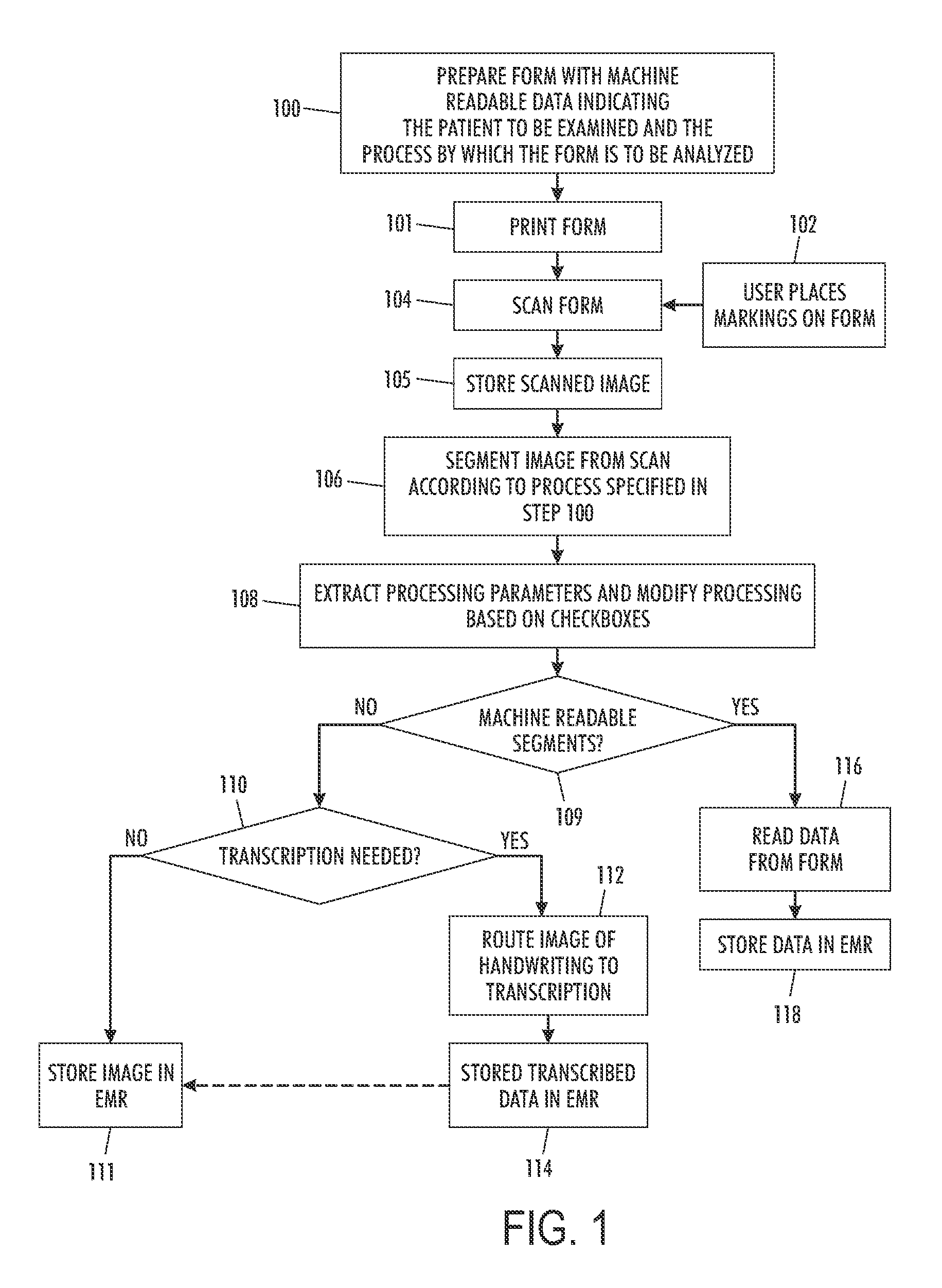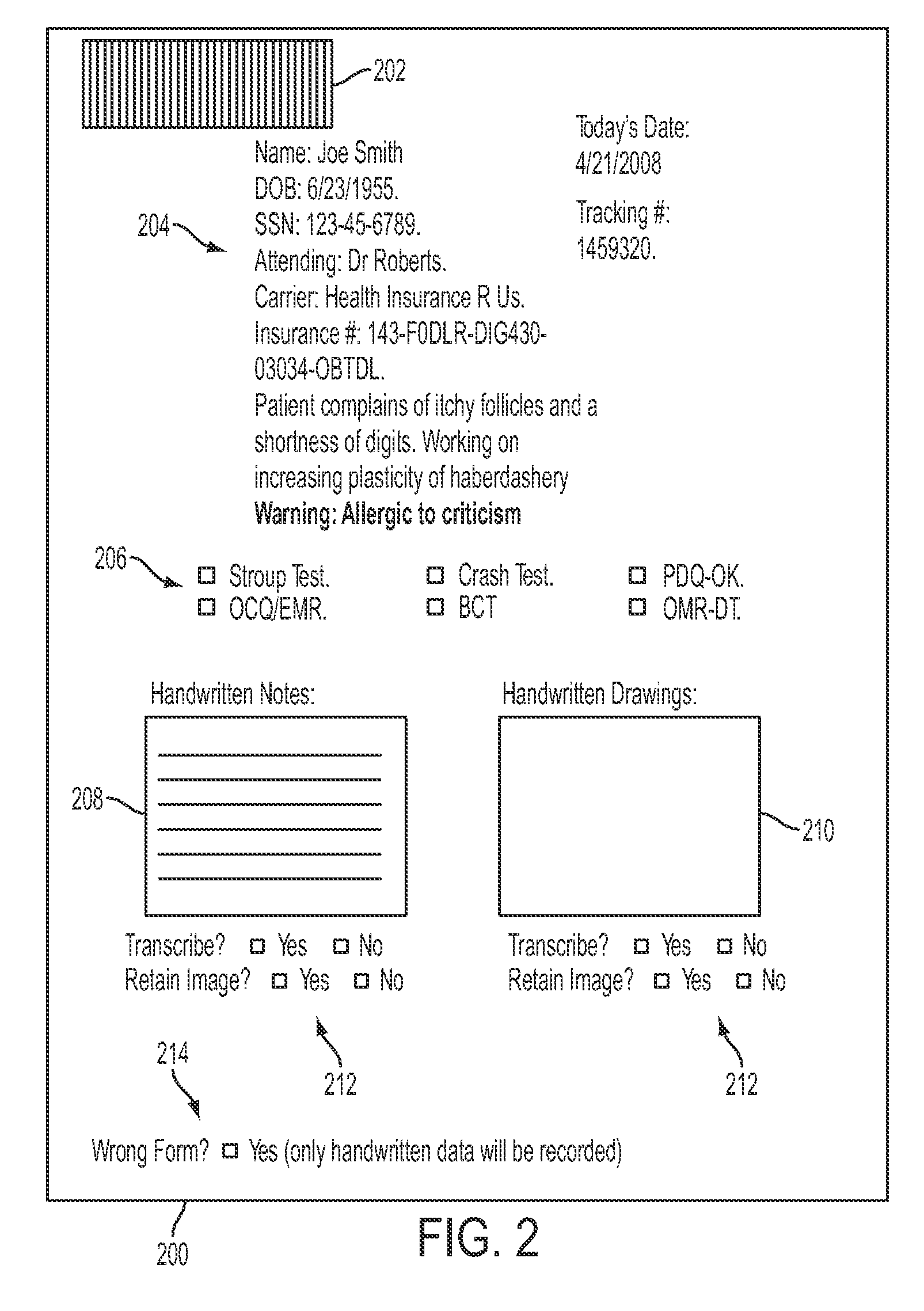Paper interface to an electronic record system
a paper interface and electronic record system technology, applied in the field of electronic medical record systems, can solve the problems of slowing down health care providers, less efficiency, and affecting the interaction between patients and health care providers, and achieve the effects of less expensive, cost saving, and cost saving
- Summary
- Abstract
- Description
- Claims
- Application Information
AI Technical Summary
Benefits of technology
Problems solved by technology
Method used
Image
Examples
Embodiment Construction
[0023]As mentioned above, despite the efficiencies gained through electronic record-keeping systems, some interactions are still performed more efficiently with old-fashioned pen and paper. In view of this, the embodiments herein combine the best of the electronic record-keeping system and best of the highly efficient pen and paper system. The embodiments herein use any form of a printing and scanning device (such as a multifunction device (MFD) that can print, scan, copy, fax, etc.) coupled to an electronic record keeping system. The embodiments herein print a form with space for structured and unstructured information, as well as the standard preprinted information associated with the electronic record-keeping system. Some of the examples used herein describe an electronic record-keeping system for medical records used by doctors and other health care providers. However, one ordinarily skilled in the art would understand that the medical field is only an example used to illustrate...
PUM
 Login to View More
Login to View More Abstract
Description
Claims
Application Information
 Login to View More
Login to View More - R&D
- Intellectual Property
- Life Sciences
- Materials
- Tech Scout
- Unparalleled Data Quality
- Higher Quality Content
- 60% Fewer Hallucinations
Browse by: Latest US Patents, China's latest patents, Technical Efficacy Thesaurus, Application Domain, Technology Topic, Popular Technical Reports.
© 2025 PatSnap. All rights reserved.Legal|Privacy policy|Modern Slavery Act Transparency Statement|Sitemap|About US| Contact US: help@patsnap.com



